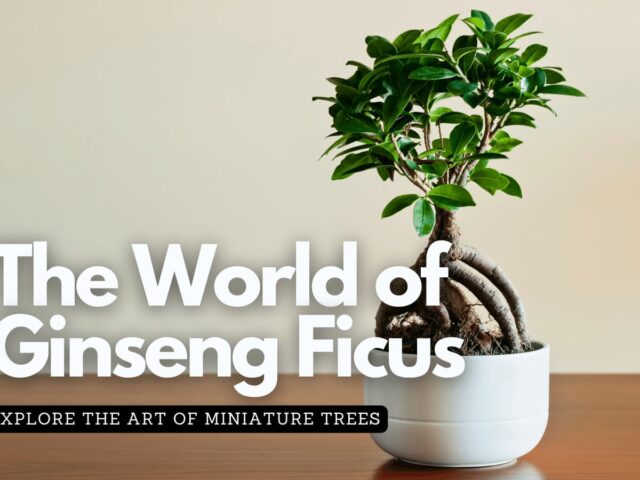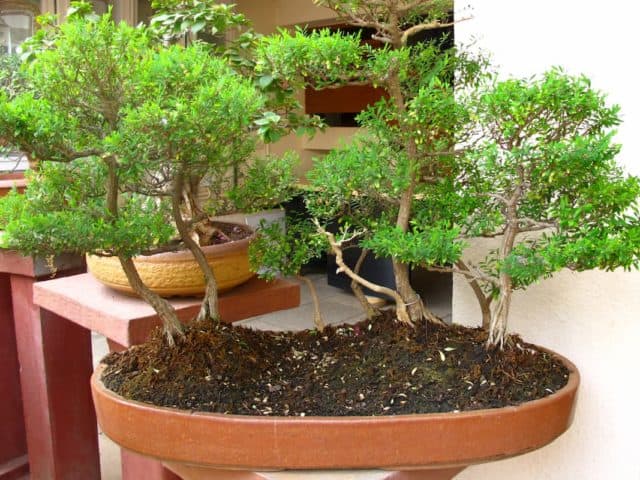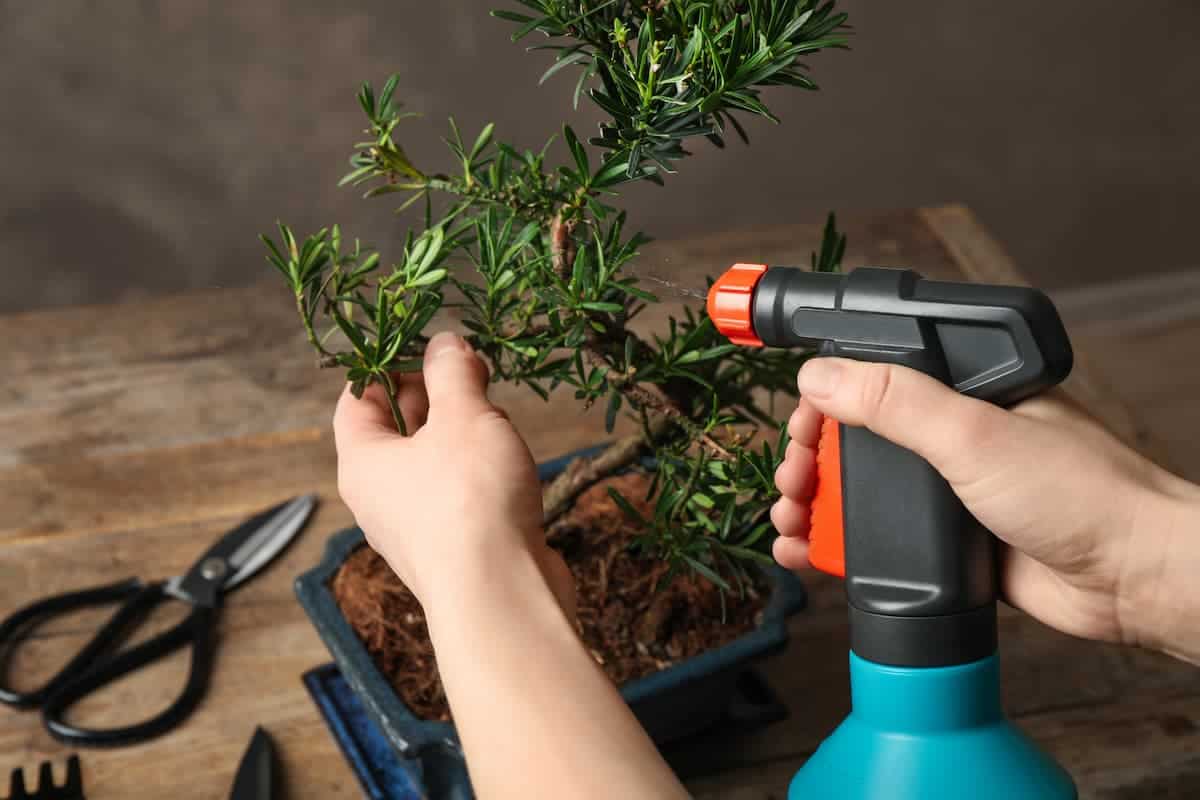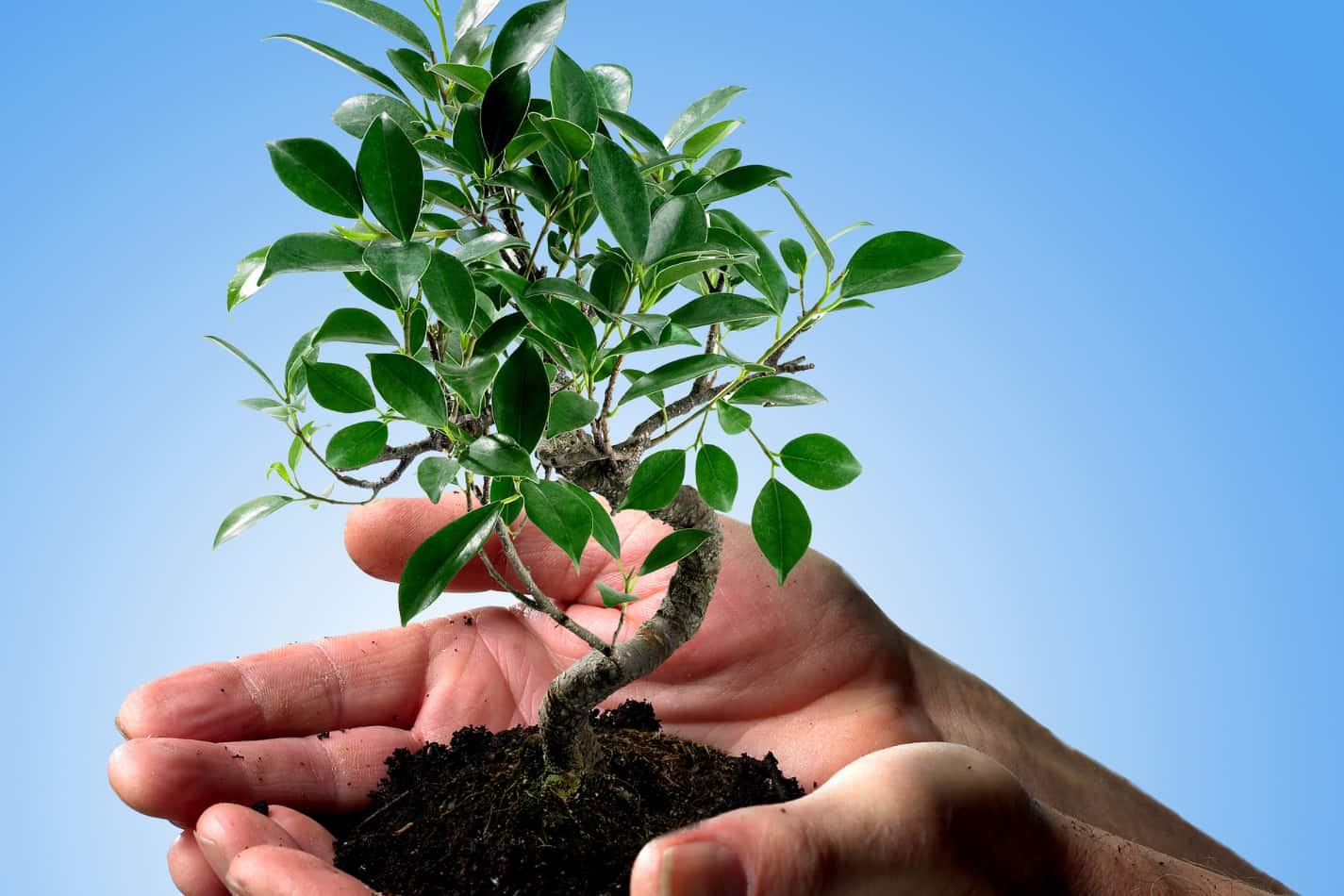The bonsai pot is an extension of the beauty of the bonsai tree. They are not just boring clay pots. They have designs and styles that complement the bonsai’s beauty.
But bonsai pots are sometimes not as affordable as you’d want them to be. You’ve come to the right place if you’ve ever wondered why bonsai pots are so expensive.
The more expensive bonsai pots might cost a fortune because they’re usually hand-crafted by well-known masters of pottery. It requires special skills and experience to manufacture a good quality bonsai pot. Besides, the complexity of the design, rarity, and age of the pot might also contribute to its price tag. The bonsai species also plays a role here.
With a rare and one-of-a-kind bonsai pot, you might be paying mostly for the art that goes into making it. But several other factors play significant roles in the steep prices of bonsai pots.
To know more, make sure to read the whole article and go through my list of some affordable pots.
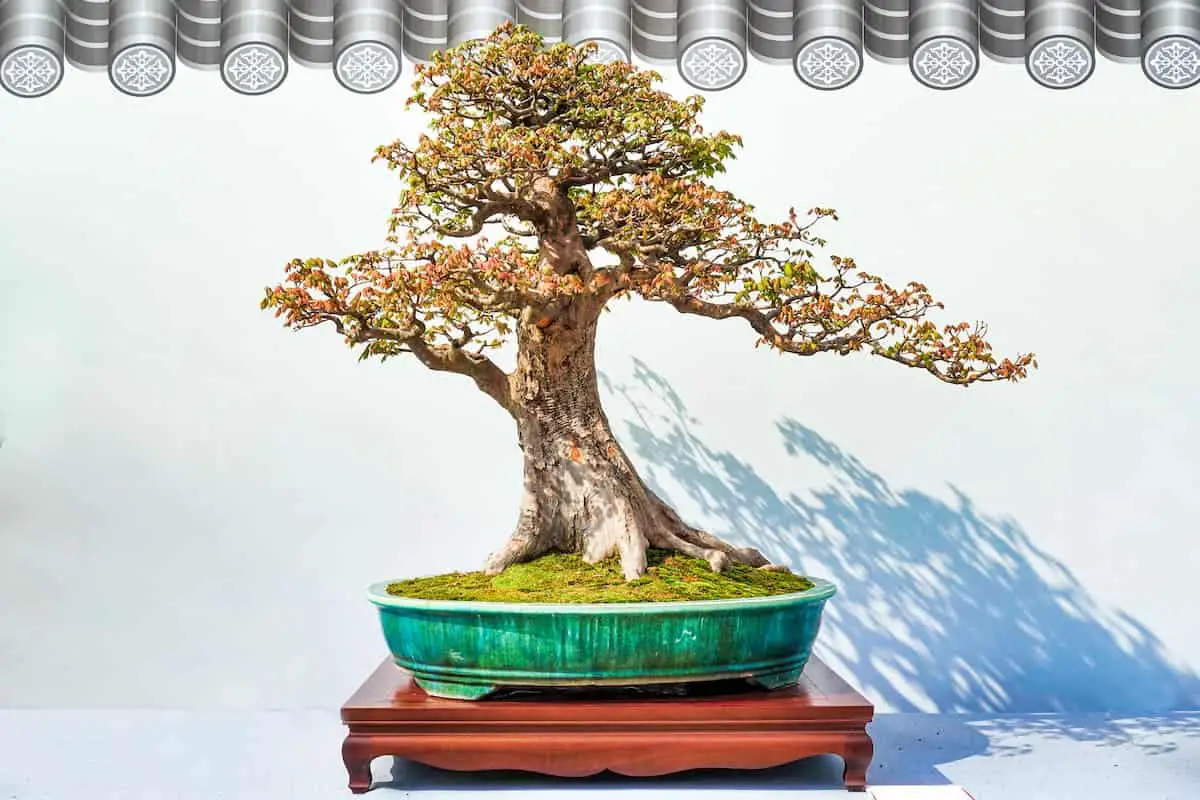
7 Reasons for Some Bonsai Pots Being Very Expensive
Not all bonsai pots are made equal. Based on their design, origin, the craftsmen, age and many other factors some pots can cost from hundreds to thousands of dollars. Lets, take a look at some of the factors that influence the cost of bonsai pots.
Complexity of Design
A bonsai tree is a work of art. So, it only fits that it has an artful pot. A lot of work goes into the making of the bonsai pot. Bonsai trees have very vulnerable health, so the pots must be made very carefully to promote their good health. And so, the design can be very complicated.
Among several aspects, a bonsai pot must have three elements in check:
- The appearance of your bonsai tree
- Everlasting good health
- Proper soil moisture
Bonsai trees require unique pots to accommodate them. Maintaining the shape of your bonsai tree also depends on the pot.
It has to add to the tree’s aesthetic and should also highlight the attributes of the tree. The shape of the bonsai depends on the pots as well. Besides, unique trees may require special pots.
A bonsai pot must also have sufficient room for the tree to stretch its roots. The roots are vital for the growth of your bonsai tree.
Typically, a bonsai pot has a tray-like design or a very shallow design. It replicates the look of a tree growing in its natural habitat. Wherever you place it, it will look like it’s growing out from there.
Additionally, the pot’s shallow design will also enable the tree to stay in better health and give you more control of your bonsai’s growth.
Your bonsai should be able to draw nutrients and moisture from the roots effortlessly. It should hold more moisture so that you don’t have to water your bonsai as frequently, and the roots will develop properly.
This design is more important if you have a bonsai that prefers higher soil moisture. For example, Japanese maples and Hawaiian umbrella trees prefer such soil conditions.
Trees like juniper and pine might need more space in the bottom. So, each bonsai may require a different pot designed primarily to maintain their aesthetic and health.
As you can see, the pots’ design is very complex, and the maker has to keep several things in mind while making it. This is one of the prime reasons why bonsai pots are so expensive.
Master Craftsmanship
If your bonsai tree is ancient and of a rare species, it will need a pot that is of high quality. For particular trees, some vendors offer a one-of-a-kind pot that especially suits the needs of your tree. In this case, you might need to pay a steep price for the pot.
Additionally, bonsai pots are mostly hand-made, which is a significant reason why some pots are expensive. When you purchase a product that’s crafted by hand, you are paying for a unique product.
You’re also paying for the knowledge, the maker’s mastery, and most importantly, the effort that the maker has invested in it.
The bonsai pots make the tree look like it is growing in its natural surroundings. It’s usually a tray-like structure that can hold more moisture in the soil.
Besides, depending on the bonsai plant species, the pot should be glazed and unglazed, portraying the trees’ natural habitat.
Usually, unglazed pots portray a harsh environment and the tree’s age, while glazed pots give a more soothing and relaxing, and calming look.
Some bonsai pots are a hallmark of ancient practice and require special skills and mastery.
Often, you’ll see that some makers use a specific recipe to make the clay and use it to craft the pots. You can see such an example in the making of Tokoname pots.
They use clay from a clay layer under the hilly land in the Tokoname area. It’s then vitrified at a low temperature, which produces pots that excel in functionality and appearance.
Other than that, there are several different techniques to make a bonsai pot. In a method called Kurinaki, the pot is carved out from a single block of clay. Other vendors may use wood and stone to give the pot a unique look.
So, the makers have to have master skills and be artful in making these pots. It’s also why they’re considered art rather than commercial products.
You’ll see several individuals who collect the pots as a hobby because it is a regal and artistic addition to your home or collection.
I’ve already talked about several important aspects of the bonsai pot design. A bonsai pot will not be of acceptable quality if the maker doesn’t have master craftsmanship.
You’re also going to pay for the maker’s work hours as it takes a long time to make a bonsai pot. The pots also keep the mini trees in good shape, which is a prime feature of bonsai plants.
Age of the Pot
It’s not an unknown fact that antique items have a higher value in the market. It is the same for bonsai pots. Some Japanese and Chinese bonsai pot vendors usually have a lot of antique options for some bonsai trees. These pots can certainly tip the balance when it comes to the price.
Besides, the price of the bonsai pots depends a lot on their age as well. Old antique bonsai pots usually come from Japan and China and may cost thousands of dollars.
But some factory-made pots can cost less than a dollar. So if you see a costly bonsai pot at an auction or an event, it’s safe to assume that the pot could be an antique one.
Rarity
For rare bonsai species, you will need rare bonsai pots mainly made for your bonsai tree. Rare items have additional production costs because they don’t have as much demand in the market.
It’s the same with bonsai pots. The pots can also essentially be historical artifacts, which are undoubtedly expensive.
If you have a common bonsai species, you will have several options to choose from in the market.
But if you have a rare species of a bonsai tree that’s difficult to grow, you might need a rare pot specially made for your tree, which might be an expensive investment.
Also, among the antique bonsai pots some are a bit rarer than others. That is why on top of their age the rarity can greatly increase the pot’s value.
Quality of the Pot
When you choose a pot for your bonsai tree, you’ll always have to prioritize its health first. While the pot’s appearance is an essential factor, it must also keep the bonsai in good health.
As I’ve already mentioned, many factors make a quality bonsai pot. A good bonsai pot should add to the tree’s beauty without grabbing too much attention to itself. It should have proper drainage holes and wiring so that your bonsai remains in place with the pot.
The drainage system ensures that there isn’t a water pool at the bottom. Waterlogged into the root system of your bonsai could potentially be fatal for your tree. So, the drainage holes must be large enough to prevent that.
Besides, it also has to be large enough to allow proper breathing of the roots and prevent frost damage.
With a good quality bonsai pot, you can be more confident with the drainage system, the technology, the drainage system, and the material. These services guarantee that all the elements will work together and benefit the tree.
Several materials can make a bonsai pot. Some of these are plastic, ceramic or porcelain, cement, clay, metals, mica, stoneware, and wood.
Among these, mica and ceramic pots are widely available and make suitable raw materials for good quality bonsai pots.
Other materials like stoneware and wood must be carved in specific ways to make the pots, which might require advanced techniques.
Some of these vendors have perfected their style and production routine for generations to ensure quality pots, hence the premium price tag.
The bottom line is the clay or other raw materials used to make the pots may add to the pots’ overall functionality.
Acquiring these raw materials involves several processes and steps, so bonsai pots are more expensive than regular flower pots.
Size
Among the many factors you need to consider while choosing a bonsai pot for your tree, the pot’s size tops the list. The pot must be of a specific size depending on the tree’s height to maintain good health and appearance.
The size of the pot must be just right. If it is too large, you might lose control over the growth rate of your bonsai. But your tree might start to die out if the pot is too small.
So you’ll be risking the life of your bonsai tree if the pot isn’t the right size. Moreover, the size of the pot has to correspond to the extensive root system.
You’ll find different sized pots with varying price tags. Usually, the bigger size pots are more expensive than smaller ones. If your bonsai tree is large, you will need a bigger tray pot and have to invest more money.
But if you like an antique pot that’s no larger than your palm, you still might see a premium price tag attached with that pot.
They’re Not Like Other Pots
Unfortunately, you can’t grow a bonsai tree in regular bonsai pots. Even if you develop one, it won’t be as attractive and healthy as a traditional flower pot.
The pots need to have proper wiring and drainage systems. So, you’ll have to buy one that’s mainly for bonsai trees.
For instance, you’ll usually see one style of flower pots, and that’s terracotta. With bonsai pots, you’ll have several designs and styles to fit the aesthetic of your bonsai tree.
You have your regular rectangular pots that look like trays, oval-shaped pots, round bowl style, square ones, cascade and semi-cascade pots, lotus-shaped, and many more.
Besides, you can also have them in different colors. It could also be glazed and unglazed. Each style gives a different look to the tree. The pots are essentially like photo frames, and your bonsai tree is a serene photograph.
You’ll also get to choose if you want a display pot or a training pot. Wood, mica, or plastic typically make the display pots. Training pots have enough space to produce a stable root system in your bonsai tree.
If the root system is sound, it will also allow your bonsai tree to have a thick trunk and good branching.
Generally, the display bonsai pots are more expensive and aesthetically pleasing. The pots are also made to endure extreme weather, and you can care for your bonsai with less effort.
Other than the unique technology that goes into the pottery of bonsai pots, they are also fired after drying.
The firing needs to be done on a special pottery kiln. Even if the pots are mass-produced in factories, skilled personnel need to overlook the entire construction process.
Then a glaze is applied if it is desired and then fired again. The pots are fired the second time to ensure that they are frost resistant.
I’ve already talked about some of the unique techniques involved in making bonsai pots. Although bonsai means a tree inside a pot, merely having a tree inside a pot doesn’t make it a bonsai. You’ll need a pot specially made for your bonsai.
Since they’re hand-made and need to be made intricately and need years of training and skill, they are unlike your regular flower pots and have high value in the market.
Some Affordable Bonsai Pots
Sure a nice quality pot make improve your bonsai. But sometimes spending so much for a pot is not possible. So, if you are looking for cheaper options then there are a number of them out there.
Here, I will be mentioning some of them. All of these pots are under 100 dollars, so that they won’t break your bank account.
Bonsai Boy Professional Series Black Ceramic Bonsai Pot
The professional series pots from Bonsai Boy are packed with subtle details that compliment your tree and enhance the classy design.
My personal favorite is the one that’s eight inches wide and four inches deep. If you have a larger bonsai, this is the perfect bonsai pot for it.
Plus, since it’s ceramic, it’ll be frost-proof. It also has anchoring wires and pre-made grooves. The most vital feature of these pots is the ultra-strong drainage holes.
Bonsai Boy Professional Series Black Ceramic Bonsai Pot Features
- Deeper than other bonsai pots of the same length
- Grooves on the side and bottom that helps anchor the roots of the tree
- Heavy-duty drainage hole
10-inch Glazed Royal Blue Oval Yixing Bonsai Pot
These pots are imported from China directly. They are elegant, natural, and hand-made.
Purple clay found near the Yangtze River is used to make these bonsai pots, which is an excellent raw material for bonsai pots.
It has a couple of drainage holes. Its external dimension is 10 x 8 x 3.25 inches.
Oval Yixing Bonsai Pot Features
- Two drainage holes
- Uses purple clay, which is one of the best materials for making bonsai pots
- Side space and room to spread the roots out
Brussel’s 12-inch Rectangle Bonsai Glazed Ceramic Pot (Large, Teal)
This mighty 6 lbs 12-inch bonsai pot from Brussel’s Bonsai is high quality in its making.
It is very durable and weatherproof for outdoor with smooth finishing looking almost glass-like.
Besides, it is also rich glazed and comes with a 90-day warranty.
The teal shade will refresh your home décor and make your interior look royal. It’s a great beginner bonsai pot and is footed with drainage holes.
Brussel’s 12-inch Rectangle Bonsai Glazed Ceramic Pot Features
- Weatherproof of smooth finishing
- Molded carefully and baked at high temperature with a premium quality clay
- Excellent for beginners
There are many bonsai pot options, but the best pots pair with a good reputation and quality. While selecting one that seems to work best for your tree, make sure you’re getting the best value for your money and you’re buying from a trustworthy source.
Final Thoughts on Why Are Bonsai Pots so Expensive
As you can see much of the cost comes from the hard work and dedication to the craft that goes into creating Bonsai pots, not just a vendor hoping to get rich.
While there are many impressive pots that will cost a pretty penny there are many available like our examples above that can be found for a small cost but maintain the aesthetics.
If you are just learning about bonsai trees and looking to purchase high quality trees that will likely live longer than you then I would highly suggest checking out Bonsai Boy Trees as they are a long lasting New York business that provides trees for all price ranges!


